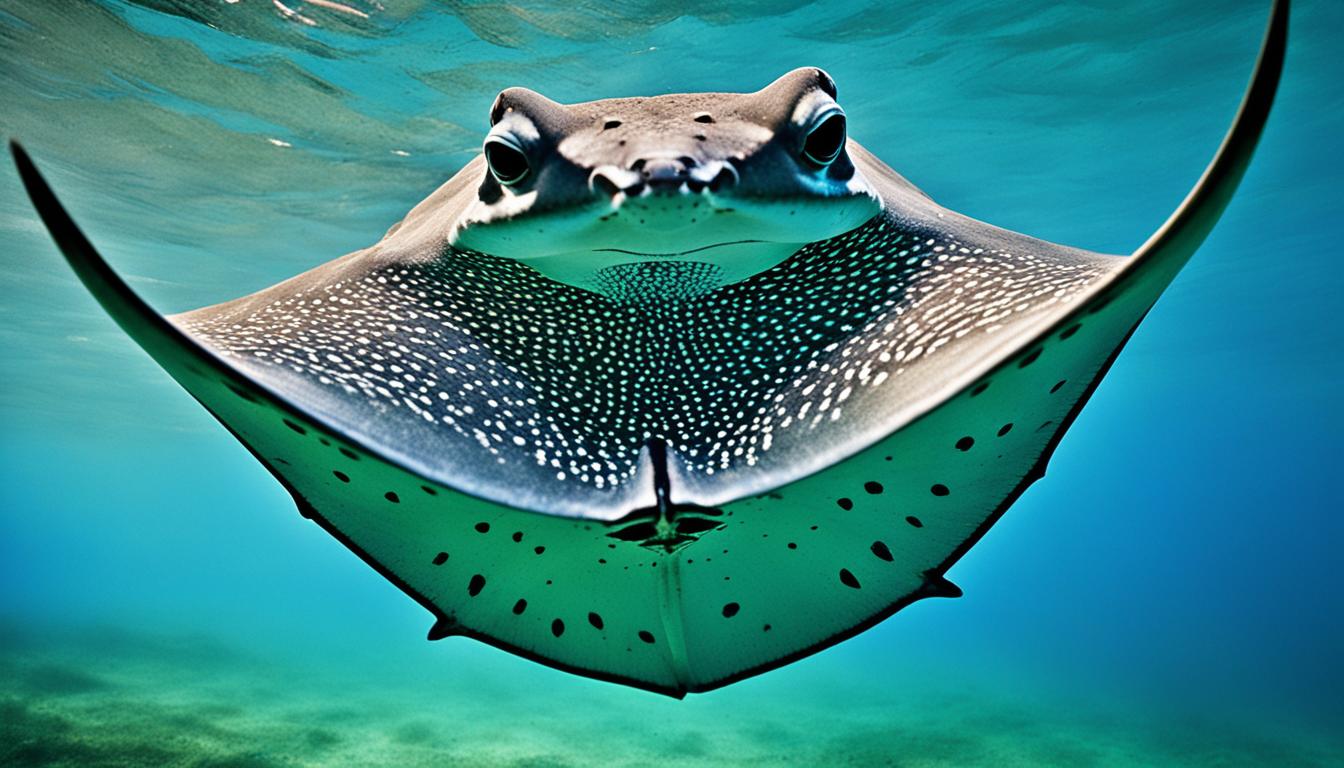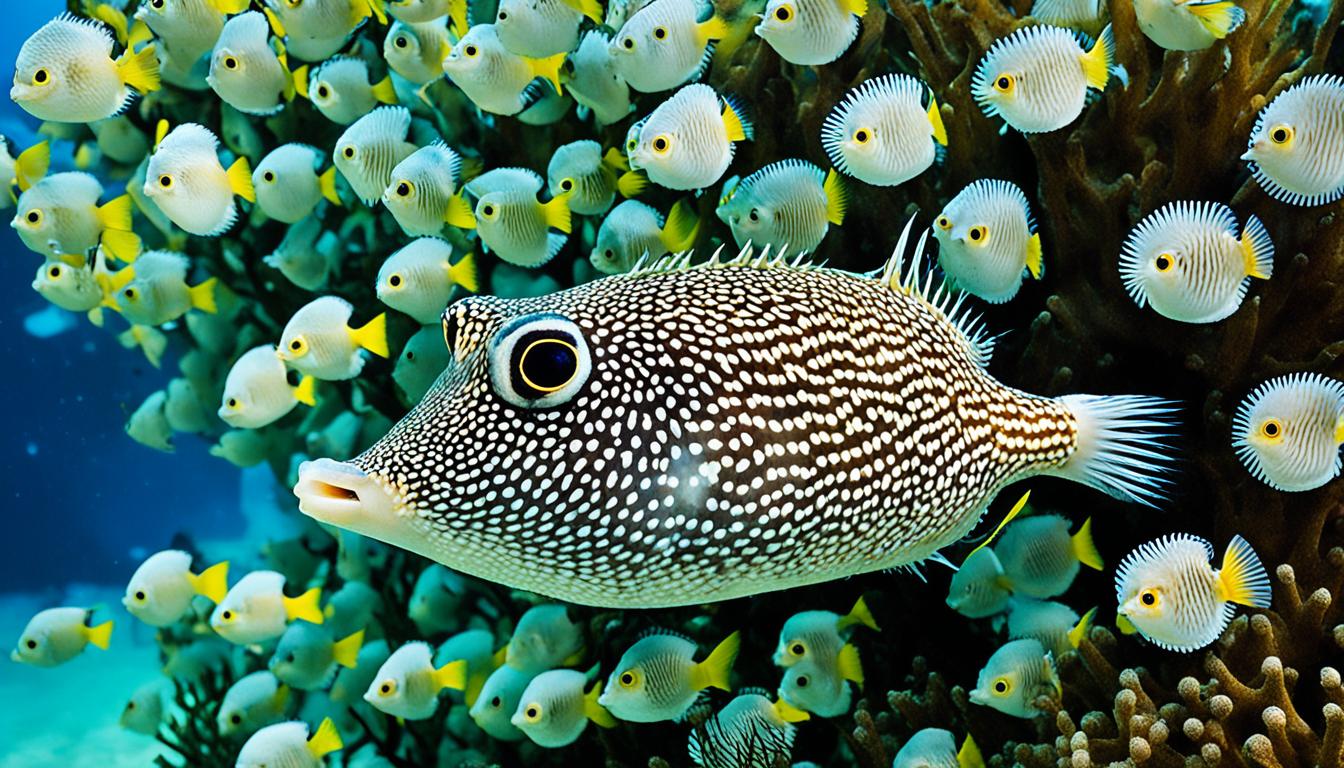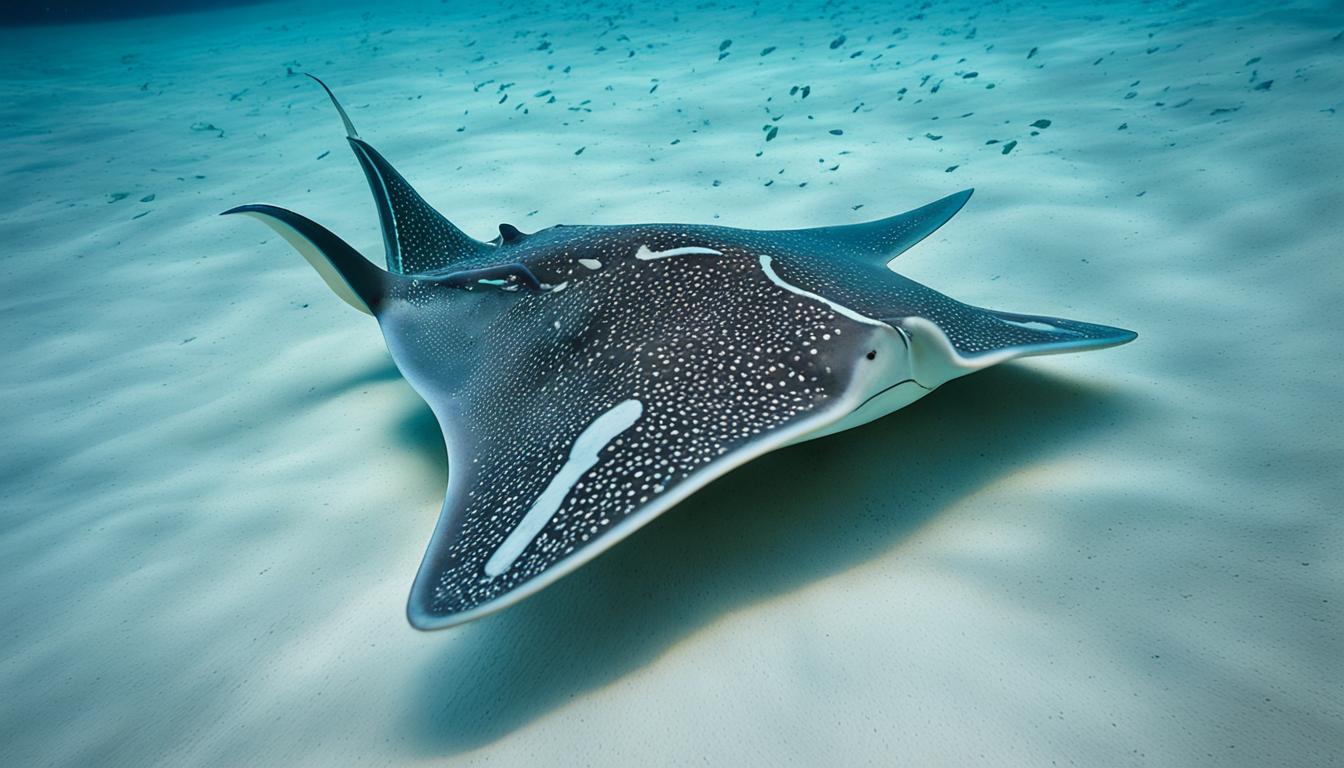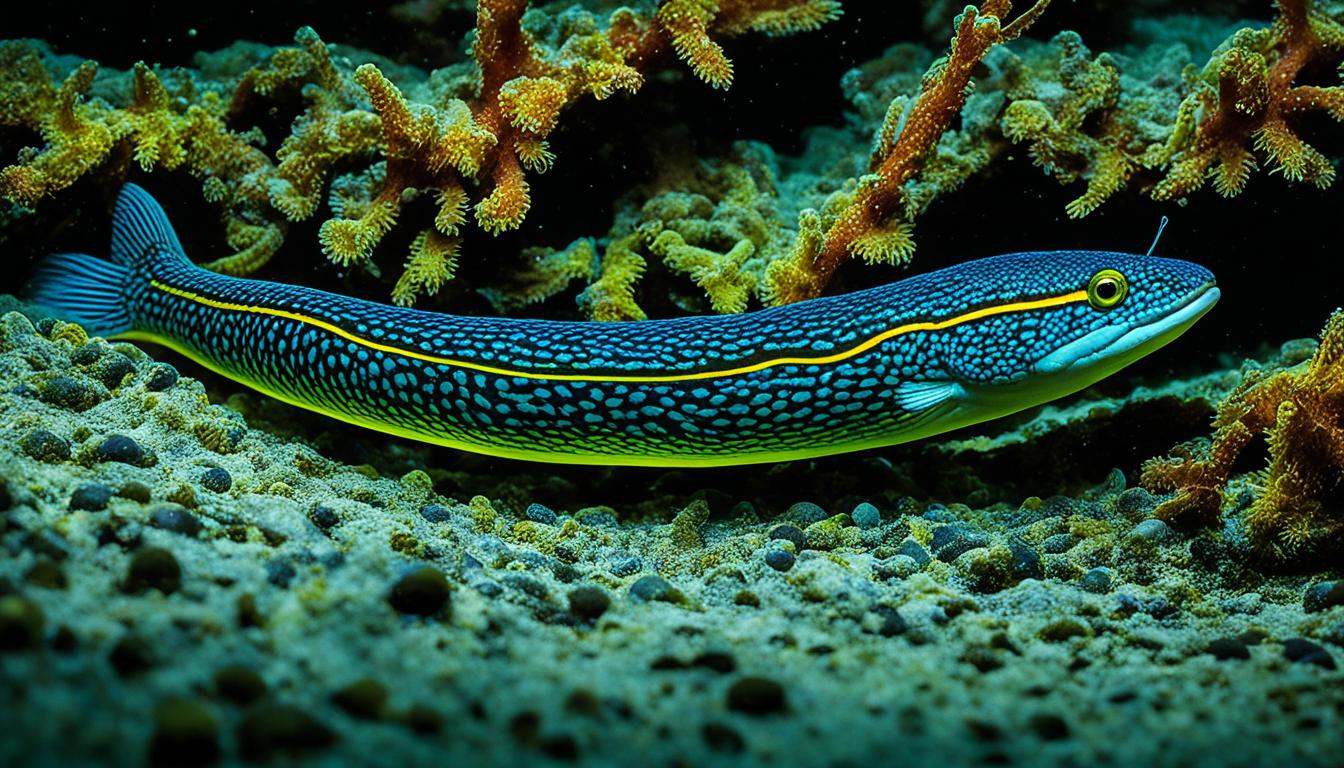Learning how stingrays defend themselves helps us appreciate these amazing creatures. They have developed many ways to protect themselves from dangers. These defense strategies are key to their survival in different habitats. Let’s dive into how stingrays protect themselves, preparing us for a closer look at their behaviors and adaptations.
Understanding Stingray Behavior and Habitat
Stingrays show interesting behavior that helps them survive in different underwater places. They live in certain habitats that affect their life cycle and how they interact with their world. Knowing how stingrays behave gives us clues about their survival strategies and defense tactics.
Stingray Adaptations for Survival
Stingrays have unique features that help them survive. Their wide, flat bodies let them move easily on the ocean floor. Camouflage is a key strategy, helping them blend in with the sand or mud. This makes them hard to spot for predators and helps them sneak up on prey.
They also have special organs called the ampullae of Lorenzini. These organs help them sense electrical signals, making hunting more effective.
Common Habitats and Their Significance
Stingrays live in shallow, warm waters, often near coasts. These areas are important for their survival and hunting. In these spots, stingrays can dig into the ground for safety from threats.
Learning about their habitats shows us how stingrays adapt and live in their environments.
The Defense Mechanisms of Stingrays
Stingrays have special ways to help them survive in the wild. They use stingray barbs and venom as their main defenses. These tools help them fight off predators and get away from danger.
How Stingrays Use Their Sharp Barbs
The stingray’s barbs are at the tail’s base. They are the first defense against threats. When threatened, a stingray arches its back and lifts its tail to sting. The barbs have serrated edges to cause the most harm, making them a strong defense against big predators.
The Functionality of Stingray Venom
Stingrays also have venom that adds to their defense. This venom causes a lot of pain and can stop attackers in their tracks. With the help of their barbs and venom, stingrays can effectively escape from predators.
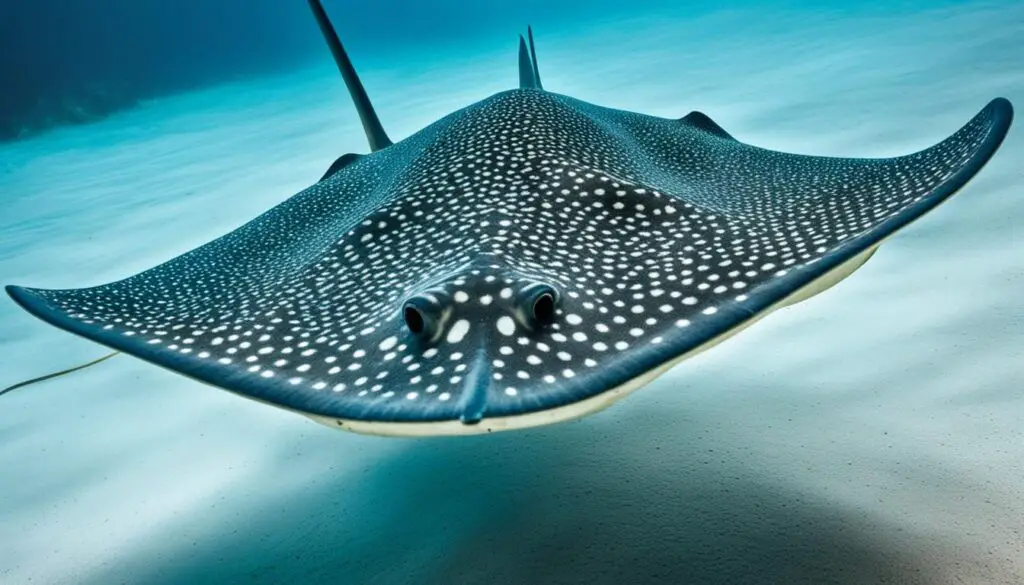
How do stingrays defend themselves?
Stingrays have amazing ways to avoid danger in the water. They use camouflage and special behaviors to stay safe. These methods help them in their fight for survival.
The Role of Camouflage in Defense
Camouflage is key for stingrays. They hide by burying themselves in the sand. This way, they can’t be seen by predators or others underwater. Only their eyes peek out, making it hard to spot them.
Stingray Behavior During Threats
When camouflage doesn’t work, stingrays change how they act. They move quickly and stand up in a defensive way. They might arch their bodies or dart away fast to get away from danger. These quick moves show how agile and quick they are in defending themselves.
Predators of Stingrays and Their Threats
Stingrays have learned how to survive in the ocean. They face many threats from predators like sharks and big fish. Knowing about these predators helps us understand how stingrays have adapted over time.
Natural Predators of Stingrays
Stingrays are not at the top of the ocean’s food chain. Their main predators are:
- Sharks, which often go after young stingrays because they are smaller.
- Larger fish like barracuda that can easily beat stingrays in fights.
- Sea turtles, which eat smaller stingrays as food.
These predators affect stingrays’ behavior and how they survive in different places.
How Stingrays Evade Predators
Stingrays are amazing at avoiding predators. They use several strategies:
- Camouflage: They can hide well in their surroundings, making it hard for predators to see them.
- Rapid swimming: Stingrays can swim fast to get away from danger, using their strong bodies.
- Burrowing: Some stingrays hide in the sand to avoid predators.
These methods show how stingrays have evolved to deal with predators. This helps them stay in different ocean areas.
Human Encounters and Stingray Safety
When you’re in the coastal waters, knowing how to stay safe around stingrays is key. Often, people get stung by accident when they step on stingrays that are hiding on the bottom. To avoid this, using the “stingray shuffle” is a smart move. This means you move your feet instead of lifting them. It tells stingrays you’re coming and lets them leave before they feel threatened.
Even though serious stingray injuries are rare, learning about their behavior is important. Stingrays are usually calm animals. Knowing this can help you treat them with respect. In places where stingrays live, learning how to stay safe can make your time by the ocean much better.
Being aware and taking safety steps can change how you experience the water. By doing things like the stingray shuffle and learning about their ways, you can make sure your meetings with stingrays are good ones. Let’s all try to live safely with stingrays.

